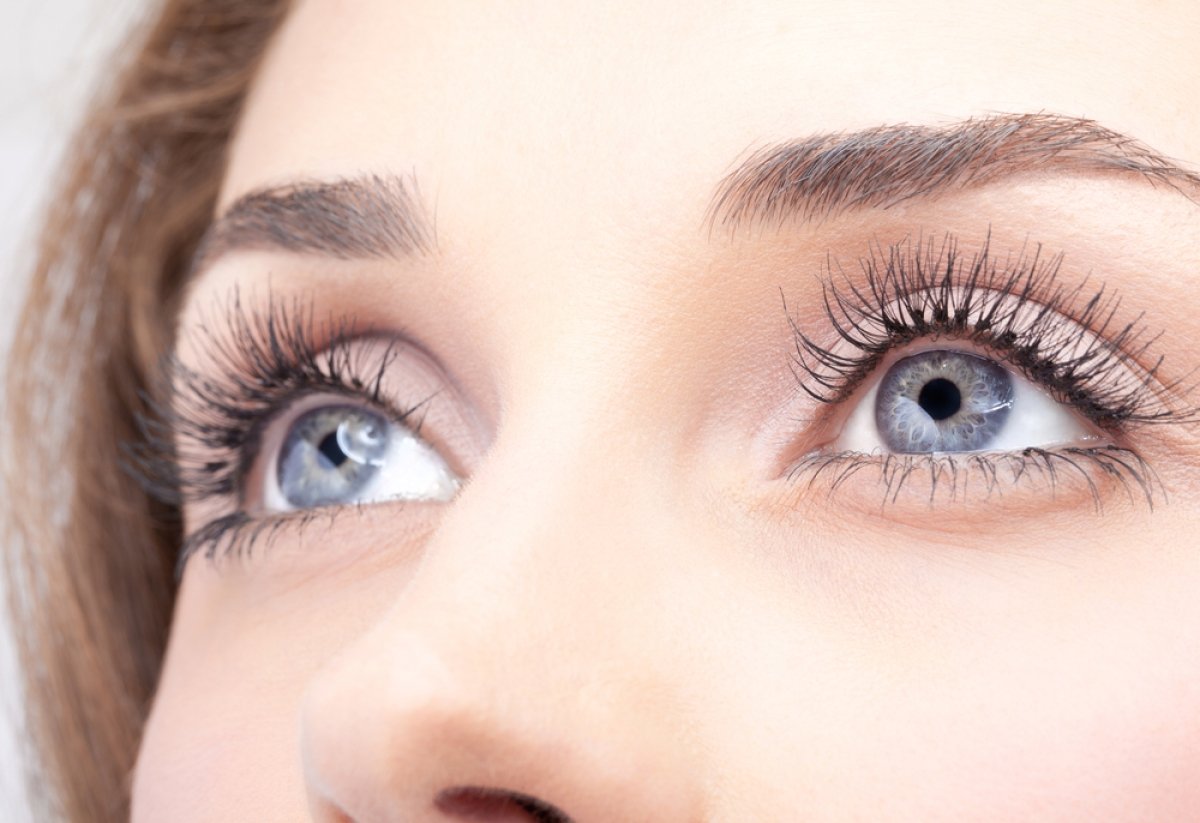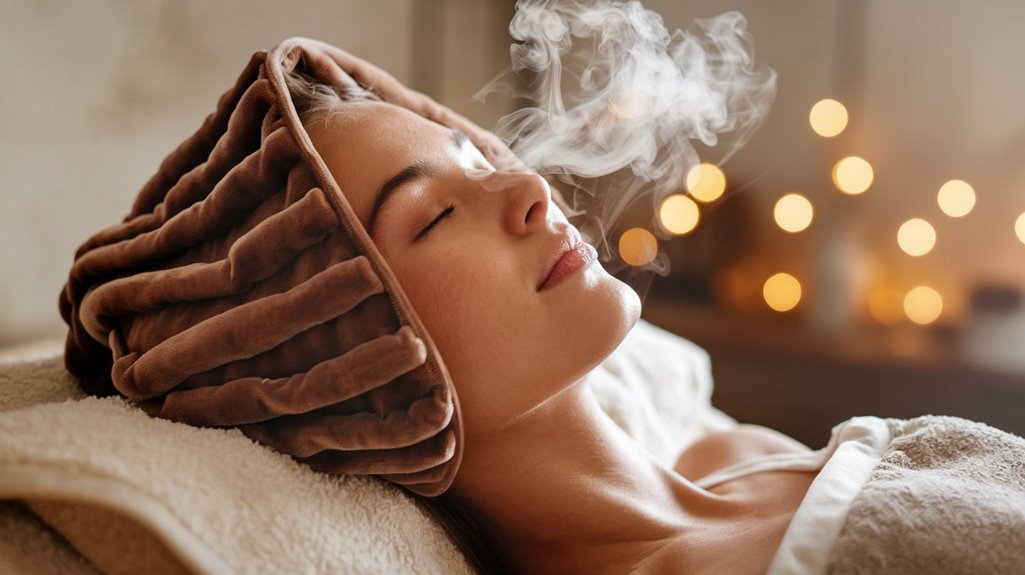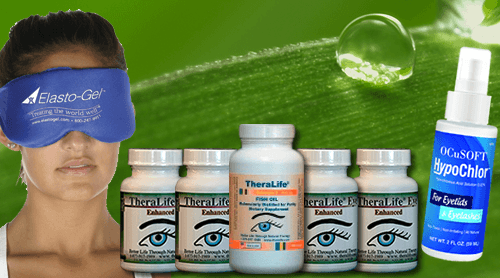Theralife’s products are designed to effectively address various eye conditions, including dry eyes, blepharitis, and uveitis, providing substantial benefits to customers seeking relief. Their comprehensive approach involves natural supplements and remedies that enhance tear film and oil layer production, improving overall eye health.
For dry eyes, Theralife offers specially formulated products that hydrate and nourish the eyes from within, reducing discomfort and irritation. Their solutions for blepharitis focus on soothing inflammation and supporting eyelid hygiene, which is crucial for managing symptoms and preventing recurrence. Customers dealing with uveitis can benefit from Theralife’s natural treatment options aimed at reducing inflammation and promoting healing without the side effects associated with conventional medications.
The use of Theralife’s products is complemented by lifestyle and dietary recommendations tailored to individual needs, further enhancing their effectiveness. This holistic approach not only alleviates symptoms but also addresses underlying causes, leading to long-term relief and improved quality of life for individuals with eye conditions.
By integrating Theralife’s products into daily routines, customers can experience significant improvements in eye comfort and health, making these offerings a valuable addition to their self-care regimen.
Key Takeaways
- Use moist compresses for enhanced tear film stability and gland function improvement.
- Select materials like elastogel or natural fillers for effective heat retention.
- Apply warm compresses to closed eyelids for 5-15 minutes twice daily.
- Ensure compresses are comfortably warm, not hot, to prevent irritation.
- Consult an eye doctor for personalized advice and symptom monitoring.
Preparing Your Warm Compress
Preparing your warm compress involves selecting the appropriate technique and following precise steps to guarantee effectiveness and safety.
For the water basin method, immerse a washcloth in warm water—ensuring it’s clean and comfortably warm. After wringing it out, apply the cloth to your closed eyelids for the recommended compress duration of 5-15 minutes. Reheat and repeat as necessary.
Alternatively, the microwave method requires wetting a washcloth, placing it in an open zip-lock bag, and heating for two minutes. Wrap it with another damp towel before use. The moisture from the compress not only hydrates the eyes but also helps alleviate dryness by loosening clogged oil in the eyelid glands. Consistent use of warm compresses can be beneficial in managing conditions like chalazion, which is related to blocked oil glands in the eyelids.
Perform compress frequency twice daily, in the morning and evening, for ideal results. Always test the temperature first and discontinue use if irritation occurs, consulting a professional if needed.
Choosing the Right Material
When selecting materials for a warm compress, prioritize cloths that are soft, hypoallergenic, and designed for ideal heat retention. Guarantee the fabric holds warmth effectively to provide consistent relief, and opt for allergy-free options to enhance comfort and prevent irritation. Studies have shown that washcloths are not effective in retaining heat, so consider alternative materials that maintain the necessary temperature for optimal results. Materials like Elastogel are recommended for their superior heat retention and ease of cleaning, making them ideal for therapeutic use.
Cloth Selection Criteria
Selecting the right cloth material for a warm compress is essential to guarantee comfort and effectiveness, especially for those with dry eyes. Prioritize fabric types that are soft and hypoallergenic to prevent irritation. Flannel is ideal due to its superior softness and gentle contact with closed eyelids, assuring high comfort levels. Avoid abrasive materials, as these can cause discomfort or even injury. Always use a fresh, clean cloth to maintain hygiene, as contaminated cloths might worsen symptoms. Ascertain the cloth fits the eye area snugly, covering both eyes comfortably without causing drips or strain. Flannel and soft cotton are recommended, while materials prone to shedding fibers should be avoided to minimize irritation risks. Regular assessment of chalazion size and symptoms is essential; seek medical advice if no improvement is observed. Warm compresses stimulate blood flow to the eyes, which can aid in alleviating dry eye symptoms.
Heat Retention Ability
Understanding the heat retention ability of various materials is essential when choosing the right option for warm compresses aimed at alleviating dry eyes. The effectiveness of a compress largely depends on its ability to maintain heat. Materials like whole corn, rice, and wheat stand out for their excellent heat retention. These natural fillers not only store heat well but also release it consistently, enhancing compress effectiveness. Considering that warm compresses are a recommended therapy for conditions like MGD, ensuring effective heat retention can significantly improve tear stability and support gland function. To maximize results, consider the following:
- Whole corn, rice, and wheat: Provide superior heat retention for extended relief.
- Cherry pits, clay beads, walnut shells: Offer durability with washability, maintaining performance.
- Flaxseed, whole corn, jasmine rice: Deliver a pleasant tactile experience alongside effective heat retention.
Regularly incorporating warm compresses can also help in reducing symptoms associated with MGD, such as eye discomfort and dryness. Choose materials wisely to guarantee lasting comfort and therapeutic benefits.
Allergy-Free Fabrics
Having explored the importance of heat retention in materials for warm compresses, it’s equally important to focus on selecting the right allergy-free fabrics.
Allergy awareness is vital when choosing materials like 100% organic cotton, which is hypoallergenic, breathable, and moisture-wicking. Ascertain it’s GOTS-certified to confirm it’s free from hazardous chemicals. Choosing sustainable fashion can help mitigate adverse ecological impacts, contributing to a healthier planet. Using materials that are ophthalmologist-tested and gentle on the skin can also support eye health and comfort, especially for those prone to blepharitis.
Bamboo viscose and silk also offer hypoallergenic benefits and are gentle on sensitive skin. For fabric care, avoid blends that might contain allergens, and steer clear of those treated with toxic dyes.
Linen and microfiber are excellent alternatives, providing breathability and allergen-free comfort. Brands like Cottonique provide latex-free, spandex-free options.
Applying the Compress
To effectively apply a warm compress for dry eyes, position the prepared warm, damp cloth gently over your closed eyelids. This simple yet essential step in eye relaxation techniques can greatly reduce irritation. The warm compress adds moisture to alleviate dry, gritty sensations often associated with dry eyes. Consistent use of warm compresses can also help with meibomian gland dysfunction, a common issue linked to chronic dry eyes. Follow these compress application tips:
- Duration is essential: Keep the compress in place for 5-15 minutes for ideal benefit.
- Gentle application: Make sure you don’t press or rub your eyes, as this could cause injury.
- Consistent use: Employ this technique twice daily—morning and night—for sustained relief.
Reheat the cloth as needed to maintain warmth, making sure it’s not too hot.
Moist vs. Dry Compress
With the application technique in place, the choice between a moist or dry compress becomes important.
Moist compresses excel in moisture retention, offering superior compress effectiveness for dry eyes. By providing hydration, they help open meibomian glands, improving oil gland function and stabilizing the tear film. This results in reduced tear evaporation and increased oil flow. Using a warm compress can provide soothing relief for irritated or red eyes, further enhancing the benefits of moist compresses. Studies suggest moist compresses can be more effective when combined with gentle eyelid massage, promoting better drainage and circulation.
Studies highlight that moist compresses can enhance tear film oil layers by 80% within five minutes and 100% after fifteen minutes.
On the other hand, dry compresses lack moisture, often cooling quickly, and might require frequent reheating to remain effective. They’re generally less effective alone but can complement moist heat for conditions that benefit from varied compress applications, like morning routines.
Microwave and Basin Methods
When employing the microwave method, make certain you wet the towel thoroughly, squeeze out excess water, and microwave it in an open zip-lock bag on high for two minutes before carefully sealing it. In the basin method, fill a basin with warm, not scalding, water and soak the towel, making sure to squeeze out excess water before use. Always verify the temperature before applying the compress to prevent burns and guarantee peak safety. Consistent use of warm compresses, such as 2-3 times per day based on symptom severity, can enhance moisture retention and provide relief. Additionally, eye discharge, commonly referred to as rheum, can occur due to the accumulation of mucus, oil, and debris during sleep.
Microwave Heating Instructions
One key method for applying a warm compress to alleviate dry eyes involves using a microwave to heat the compress efficiently. Set the microwave settings to heat the compress for an initial duration of 20-25 seconds. If additional heat is needed, continue in 5-second heating intervals, ensuring you don’t exceed 30 seconds total. Before application, perform a touch test to verify the temperature is safe, ideally around 40°C (104°F). The Bruder Moist Heat Eye Compress, featuring patented MediBeads technology, is specifically designed to retain moisture effectively, making it a recommended option. Reheat within 30 minutes by halving the heating time. Always remove unnecessary microwave shelves to prevent overheating. Clean the compress with mild detergent, air-drying for 24 hours. Apply the compress over closed eyes for 10 minutes, ideally twice daily, to enhance tear quality and alleviate symptoms effectively. Regular use of a hot compress can also support overall eye health, especially when used in conjunction with other dry eye treatments.
Basin Warm Water Tips
Although the microwave method is convenient for many, the basin warm water technique offers an effective alternative for applying a warm compress to alleviate dry eyes. Start by selecting a clean basin, ensuring it’s large enough to submerge a washcloth but not so large it’s unwieldy. Maintaining cleanliness by using fresh water each time is essential. The basin method is particularly beneficial for those who may not have access to a microwave, providing a gentle and consistent source of warm moisture to soothe the eyes. Warm compresses are known to enhance oil production from meibomian glands, which is crucial for alleviating symptoms of dry eyes.
| Basin Maintenance Tips | Basin Size Considerations |
|---|---|
| Use fresh, clean water | Large enough for a washcloth |
| Avoid additives | Not too large or unwieldy |
| Separate washcloths | Comfortable handling |
| Cleanliness is vital | Adequate submersion space |
Submerge a clean washcloth, squeeze out excess water, fold to fit, and apply over closed eyelids for 5-10 minutes. Repeat as needed, ensuring warmth and cleanliness to maximize relief.
Safety Temperature Guidelines
A key consideration in applying warm compresses for dry eyes is maintaining a safe and effective temperature range.
For the microwave method, guarantee the compress reaches 40°C (104°F) to effectively loosen oils without causing burns. Use a microwave for 1 to 1 minute 50 seconds to achieve this temperature. It’s essential to monitor the temperature carefully since exceeding 45°C (113°F) can damage the eyelid skin and cornea.
For both microwave and basin methods, follow these precautions:
- Temperature Monitoring: Always test before applying to avoid burns.
- Compress Storage: Store in a clean, dry place to maintain hygiene and efficacy.
- Specialist Advice: Consult a specialist for personalized guidance.
These steps guarantee safe and effective warm compress use for dry eyes.
Benefits of Warm Compresses
While often overlooked, warm compresses serve as an essential method for improving ocular surface condition, particularly for those experiencing dry eyes.
By utilizing effective compress techniques, you can greatly enhance your eye health. Warm compresses open the meibomian glands, boosting oil gland function and increasing oil flow into your eyes. This stabilizes the tear film, slowing tear evaporation and alleviating dry eye symptoms.
Studies reveal that a 20-minute warm compress can elevate ocular surface condition and intraoperative visibility. In addition, within just five minutes of use, you might see an 80% increase in tear film oil layers, escalating to 100% after 15 minutes.
Regular application not only relieves discomfort but also boosts tear film quality, offering soothing relief from dryness.
Professional Guidance and Advice
Maximizing the benefits of warm compresses for dry eyes requires more than just the application itself; it necessitates informed guidance and adherence to best practices. Consulting your eye doctor is critical. They can provide tailored recommendations and monitor your symptoms over time.
Regular follow-ups guarantee you’re using compresses effectively and may uncover the need for additional treatments. Consider these key points:
- Proper Usage: Use warm compresses for 5-15 minutes twice daily.
- Correct Preparation: Confirm compresses are warm, not hot, and fit comfortably over eyes.
- Additional Treatments: Combine with treatments like artificial tears for better results.
Doctors can adjust your regimen based on symptom progression, guaranteeing ideal relief and eye health.
Precautions and Safety Tips
Guaranteeing the safety and effectiveness of warm compresses for dry eyes involves adhering to specific precautions and safety tips. Prioritize temperature control; never let heating devices exceed 140°F to prevent burns. Limit application to 15-20 minutes. Test compress temperature before use. Avoid adding cleansers or salts to the water, which could irritate your eyes. Use clean washcloths and water, wash hands prior to handling, and guarantee the cloth isn’t too hot.
| Safety Precautions | Handling Techniques |
|---|---|
| Temperature Control | Test Compress |
| Limit Heating Time | Fold and Apply |
| Material Safety | Ring Out Excess Water |
Microwave with caution and consider commercial products for precise thermal safety. Inspect devices for wear and use hot, not boiling, water.
Frequently Asked Questions
Can Warm Compresses Help With Eye Strain From Screen Use?
Yes, warm compresses can alleviate eye strain from screen time. They work by promoting eye relaxation through heat therapy, which eases muscle tension.
The warmth also improves tear quality, providing moisture and reducing dryness. They help maintain tear film, preventing evaporation, which is vital during prolonged screen exposure.
Always make sure the compress is warm, not hot, and use clean materials to prevent infection. Consult a doctor for personalized advice.
How Often Should I Replace My Washcloth for Hygiene?
Your washcloth is like a sponge for bacteria, so keeping up with hygiene practices is essential.
Replace it every 1-2 weeks if you use it daily. Watch for signs of wear—slimy texture, stains, or odors mean it’s time for a new one.
Maintain it by rinsing with hot water and drying thoroughly after each use. Store it in a clean, dry area to prevent mold and bacteria growth, ensuring ideal hygiene.
Are There Any Specific Eye Conditions That Benefit Most From Warm Compresses?
You should know that warm compresses are particularly effective for specific conditions.
For blepharitis treatment, they soothe inflammation and prevent gland clogging.
If you suffer from meibomian gland dysfunction, warm compresses greatly improve gland function and enhance tear quality.
They thicken the tear film lipid layer and reduce symptoms, making them an essential, cost-effective tool in managing these conditions.
Regular use can help maintain ideal eye health and comfort.
What Are the Signs That a Warm Compress Is Too Hot?
Did you know that temperatures above 45°C can risk eye damage?
You must recognize heat sensitivity and discomfort signals when using a warm compress. If the skin feels too hot upon touch, it’s likely excessive.
Watch for redness or pain—these are discomfort signals indicating overheating.
Always test the compress’s temperature with your fingers before applying it to verify safety and prevent burns or corneal damage.
Stay vigilant and prioritize eye health.
Can Warm Compresses Be Used on Children With Dry Eyes?
Yes, you can use warm compresses for children’s eye care, but prioritize warm compress safety.
Ascertain the water isn’t too hot—test on your wrist first. Use plain water and avoid additives.
Gently apply the compress, ensuring it doesn’t press directly on the eyes. Limit application to 5-10 minutes, reheating as needed.
Monitor the child’s response and consult an eye doctor if symptoms persist or for personalized advice.
Conclusion
Congratulations on your journey to mastering the art of soothing dry eyes! TheraLife.com offers a range of products designed to relieve and manage dry eye symptoms, providing comfort and support for those dealing with various eye conditions. Their comprehensive guides and natural treatment options emphasize the importance of selecting the right materials and techniques, such as moist versus dry compresses, to effectively treat conditions like blepharitis, uveitis, and dry eyes related to Sjögren’s syndrome.
TheraLife’s products are crafted to enhance eye health and are supported by insightful resources on managing eyelash mites, recurrent chalazion, and eye discharge. Their innovative solutions, such as anti-inflammatory diets and eye drops for rosacea-related dry eyes, highlight their commitment to holistic wellness. Moreover, TheraLife’s focus on safety ensures that users can confidently employ methods like microwave or basin techniques, all while protecting their eyes from unwanted harm.
Whether you’re looking to alleviate crusty eyes, explore natural uveitis treatments, or find relief from mucus fishing syndrome, TheraLife’s offerings are designed to provide effective, natural solutions. By embracing TheraLife’s expertise, you can enhance your eye care routine and experience the benefits of their targeted products, turning your dry eye challenges into manageable, soothing experiences.




